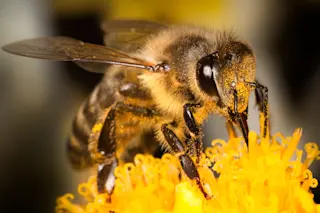(Credit: Dancestrokes/Shutterstock) A type of insecticide used on oilseed rape plants in the U.K. is likely to blame for worrying declines in bee populations across the pond. Over the past few decades, bee populations around the world over have declined precipitously. Habitat loss, viruses and pesticides are fingered as culprits, but a recent 18-year study in England focuses the blame largely on neonicotinoids, a type of insecticide approved there in 2002 for agricultural use. The researchers monitored 62 species of bees between 1994 and 2011, including 34 species of bees that forage on oilseed rape plants and 28 that do not.
Species that rely on the oilseed plants are three times more likely to experience population declines than those that do not, researchers concluded. In five of the worst-affected species, the declines topped 20 percent, rising to 30 percent for the worst-hit species, the sharp-collared furrow bee. They published the ...














